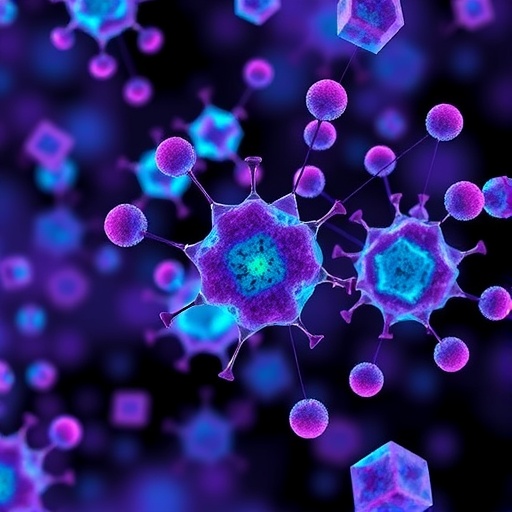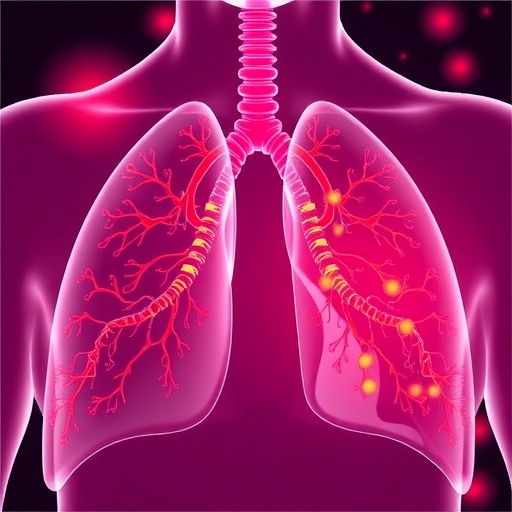In the rapidly evolving landscape of cancer immunotherapy, a groundbreaking study has emerged from the laboratories of Martí-Díaz et al., poised to redefine therapeutic strategies for breast cancer. Published in the prestigious journal BMC Cancer, this research delves into the sophisticated engineering of phagocytic signals on breast cancer cells ex vivo, proposing a novel whole tumor cell-based vaccine that holds immense promise for clinical application. The innovative approach harnesses the power of the immune system’s innate and adaptive arms, charting a new course in the fight against one of the most pervasive cancers worldwide.
Traditional cancer treatment modalities have long wrestled with the challenge of effectively targeting tumor cells without compromising healthy tissue. While cell therapies involving the reinfusion of immune cells derived from patients’ tumors have shown clinical promise, their complexity and ethical considerations have limited widespread adoption. The current study addresses these limitations by utilizing irradiated, genetically modified tumor cells to stimulate robust antitumor immunity, thereby advancing the frontier of cancer vaccine development.
Central to the research is the employment of ionizing radiation and CRISPR-Cas9 genome editing to inactivate CD47, a protein that effectively serves as a “don’t eat me” signal to phagocytes such as macrophages. By knocking out CD47 on 4T1 breast cancer cells, the team succeeded in enhancing their phagocytosis by immune cells, effectively flagging these tumor cells for destruction. This dual strategy—irradiation to increase immunogenicity coupled with targeted gene editing—represents a masterstroke in manipulating tumor biology to favor immune-mediated eradication.
.adsslot_6ndLTvkmht{ width:728px !important; height:90px !important; }
@media (max-width:1199px) { .adsslot_6ndLTvkmht{ width:468px !important; height:60px !important; } }
@media (max-width:767px) { .adsslot_6ndLTvkmht{ width:320px !important; height:50px !important; } }
ADVERTISEMENT
The scientists utilized the 4T1 murine breast cancer cell line, a well-established model that closely mimics human triple-negative breast cancer, notorious for its aggressive nature and poor prognosis. Irradiation of these cells not only curtailed their proliferative capacity but also altered their immunogenic profile, rendering them more recognizable to immune effectors. The subsequent CRISPR-mediated deletion of CD47 amplified this effect, facilitating macrophage-driven phagocytosis and the presentation of tumor antigens to the adaptive immune system.
Experimental validation in immunocompetent mouse models revealed striking results. Injection of irradiated 4T1 cells led to the activation of complete antitumor immune responses, which were further potentiated when combined with CD47 knockout cells. The synergy elicited by this combination signified a potent activation of both innate and adaptive immunity, which translated into effective tumor control. This bifocal immune engagement marks a significant leap toward devising vaccines capable of not only preventing but also treating established tumors.
Perhaps most compelling was the demonstration that the engineered tumor cells, when employed as a whole-cell vaccine, significantly curtailed tumor growth in vivo. The therapeutic efficacy was further amplified by checkpoint blockade therapy using anti-PD-1 antibodies, a class of immune modulators that rejuvenate exhausted T cells. This combinational treatment approach underlines the potential for integrating cellular vaccines with existing immunotherapies to overcome tumor immune evasion mechanisms.
The implications of these findings resonate beyond the confines of preclinical models. The capacity to harvest tumor cells directly from surgical specimens and engineer them ex vivo to boost immune recognition opens avenues for personalized cancer vaccines. Such patient-specific cellular therapies could circumvent issues of tumor heterogeneity and enable precision targeting, a critical factor in achieving sustained clinical remission.
Crucially, the study surmounts several ethical and logistical barriers associated with cell-based therapies. By utilizing ex vivo modification, the approach minimizes concerns related to the manipulation of living cellular components within patients and allows for thorough quality control. Moreover, the incorporation of irradiation ensures that the tumor cells are rendered replication-incompetent, bolstering the safety profile of the vaccine.
From a mechanistic standpoint, the attenuation of CD47 expression dismantles the tumor’s protective cloak against phagocytosis, effectively exposing it to antigen-presenting cells. This unmasking facilitates the priming and activation of cytotoxic T lymphocytes, which orchestrate targeted tumor cell killing. The reciprocal engagement of macrophages and T cells thus establishes a comprehensive immune assault, essential for durable antitumor effects.
The success of combining the engineered vaccine with checkpoint inhibitors highlights the intricate interplay between innate phagocytic activity and adaptive immune checkpoints. Anti-PD-1 antibodies relieve immunosuppression within the tumor microenvironment, allowing T cells primed by the vaccine to exert maximal cytotoxic function. This synergistic mechanism showcases the promise of combinatorial immunotherapy protocols tailored to maximize immune efficacy.
Moreover, this research offers a template for the adaptation of similar strategies to diverse tumor types. The fundamental principle of enhancing phagocytosis through CD47 targeting, coupled with irradiation-induced immunogenic modulation, could be leveraged across oncological indications where immune evasion hampers therapeutic success. This universality underscores the translational relevance of the findings.
Importantly, the study’s rigorous use of CRISPR-Cas9 genome editing exemplifies the transformative impact of gene editing technologies in immuno-oncology. The precision and efficiency of CRISPR enable targeted disruption of immunosuppressive pathways, paving the way for next-generation cell-based vaccines that can be customized and scaled for clinical deployment.
Future directions highlighted by the researchers include the optimization of dosing regimens, exploration of additional immune checkpoint combinations, and evaluation of long-term immunological memory elicited by the vaccine. Such investigations are imperative to fully unravel the therapeutic potential and to chart safe pathways toward human clinical trials.
In conclusion, the pioneering work by Martí-Díaz and colleagues heralds a paradigm shift in breast cancer immunotherapy. By innovatively engineering tumor cells to enhance innate phagocytic recognition and harnessing the synergy with adaptive immune checkpoint blockade, the study lights a promising route toward efficacious, personalized cancer vaccines. This approach not only challenges existing treatment paradigms but also embodies the future of precision oncology, where disease is confronted through the orchestrated power of the immune system.
Subject of Research: Ex vivo engineering of phagocytic signals on breast cancer cells to develop a novel whole tumor cell-based vaccine enhancing antitumor immunity.
Article Title: Ex vivo engineering of phagocytic signals in breast cancer cells for a whole tumor cell-based vaccine
Article References:
Martí-Díaz, R., Sánchez-del-Campo, L., Montenegro, M.F. et al. Ex vivo engineering of phagocytic signals in breast cancer cells for a whole tumor cell-based vaccine. BMC Cancer 25, 1029 (2025). https://doi.org/10.1186/s12885-025-14432-1
Image Credits: Scienmag.com
DOI: https://doi.org/10.1186/s12885-025-14432-1
Tags: antitumor immunity strategiesbreast cancer immunotherapyCRISPR-Cas9 gene editingengineered tumor vaccinesimmune system activation in cancerinnovative cancer treatment approachesirradiated tumor cell therapiesmacrophage targeting in cancer therapyMartí-Díaz et al. research findingsovercoming cancer treatment limitationsphagocytic signals in cancertumor cell-based vaccination





